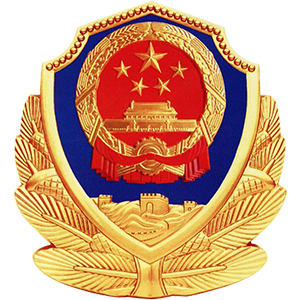Morphology Control and Suppression of Lithium Dendrite Growth in Solid-State Electrolytes Based on Phase-Field Simulation
-
摘要: 传统液态电解质的易燃易爆性带来的安全隐患,推动了基于固态电解质系统的全固态锂电池开发. 然而,锂枝晶生长问题仍然是阻碍固态锂电池商业化应用的一个亟待解决的关键难题. 因此,深入探究固态电解质内锂枝晶生长的形貌调控机制及抑制策略,对于提高固态锂电池的循环寿命并推动其广泛应用至关重要. 该工作基于相场法,通过构建力-电化学的多场耦合模型,动态地演示了锂枝晶生长形貌及其力学行为,并探讨了模型参数/条件对锂枝晶形貌的调控和抑制作用. 结果表明:低水平的界面反应率系数能有效减缓锂枝晶的生长速度,同时还极大地降低了其根部承受大机械应力的范围;通过改变固态电解质材料内锂离子的各向异性扩散程度,可以实现枝晶形貌从纤维状到扁平状的转变;多晶成核对于晶间相互靠近的侧枝具有抑制作用,最高应力为单晶成核的3~5倍;高弹性模量的固态电解质对于锂枝晶生长有显著的力学抑制作用. 该研究有望为固态电解质的优化设计以抑制固态锂金属电池的枝晶生长提供参考.Abstract: The safety concerns regarding the flammability and explosivity of traditional liquid electrolyte (LE) lithium batteries have spurred the development of all-solid-state lithium batteries with solid-state electrolytes (SSE). However, the issue of lithium dendrite growth remains a critical challenge to be urgently addressed to commercialize solid-state lithium batteries. Hence, a thorough investigation of the morphology control mechanisms and suppression strategies for lithium dendrite growth within solid-state electrolytes is crucial for improving the cycle life of solid-state lithium batteries and promoting their widespread application. Based on the phase-field method, a multi-physical fields coupling model integrating mechanics and electrochemistry, was constructed to dynamically demonstrate the morphology and mechanical behavior of lithium dendrite growth. Then the model parameters and different conditions were explored to regulate and suppress the morphology of lithium dendrite. The results indicate that, a low-level interfacial reaction rate coefficient can effectively slow down the growth rate of lithium dendrite, while also significantly narrowing the high mechanical stress range at the dendrite root. With the change of the lithium-ion anisotropic diffusion degree within solid-state electrolyte materials, the transition of dendrite morphology from fibrous to flat can be achieved. The polycrystalline nucleation exhibits inhibitory effects on the lateral branches close to each other, with the maximum stress being 3 to 5 times higher than that of single-crystal nucleation. Solid-state electrolytes with a high elastic modulus exert notable mechanical inhibitory effects on lithium dendrite growth. This work can serve as a valuable reference for the optimization design of solid-state electrolytes to suppress dendrite growth in solid-state lithium metal batteries.
-
Key words:
- electro-chemo-mechanical coupling /
- dendrite growth and suppression /
- all-solid-state battery /
- phase-field method
edited-byedited-by1) 我刊青年编委赵莹来稿 -
表 1 应力耦合的相场模型对比
Table 1. Comparison of mechanically coupled phase-field models
model mechanically coupled phase-field model reference model 1 $ \begin{gathered} \frac{\partial \xi}{\partial t}=-L_\sigma\left(\frac{\delta \varSigma}{\delta \xi}+\Delta \mu_{\mathrm{m}}\right)-L_\eta h^{\prime}(\xi)\left\{\exp \left[\frac{(1-\alpha) z F \eta_{\mathrm{a}}}{R T}\right]-\widetilde{c}_{+} \exp \left[-\frac{\alpha z F \eta_{\mathrm{a}}}{R T}\right]\right\} \\ \Delta \mu_{\mathrm{m}}=\frac{\partial g_{\text {mech }}\left(\boldsymbol{\varepsilon}^{\mathrm{E}}\right)}{\partial \xi} \end{gathered}$ [13, 16] model 2 $ \begin{gathered} \frac{\partial \xi}{\partial t}=-L_\sigma\left(\frac{\delta \varSigma}{\delta \xi}+\Delta \mu_{\mathrm{m}}\right)-L_\eta h^{\prime}(\xi)\left\{\exp \left[\frac{(1-\alpha) z F \eta_{\mathrm{a}}}{R T}\right]-\tilde{c}_{+} \exp \left[-\frac{\alpha z F \eta_{\mathrm{a}}}{R T}\right]\right\} \\ \Delta \mu_{\mathrm{m}}=\beta \sigma_{\mathrm{m}}+\frac{1}{2} \frac{\partial g_{\text {mech }}\left(\boldsymbol{\varepsilon}^{\mathrm{E}}\right)}{\partial \xi} \end{gathered}$ [15, 17] β is the stress factor, and σm is the average of the maximum and minimum stresses of dendrite model 3 $ \begin{gathered} \frac{\partial \xi}{\partial t}=-L_\sigma \frac{\delta \varSigma}{\delta \xi}-L_\eta h^{\prime}(\xi)\left\{\exp \left[\frac{(1-\alpha) z F \eta_{\mathrm{a}}}{R T}\right]-\widetilde{c}_{+} \exp \left[-\frac{\alpha\left(z F \eta_{\mathrm{a}}+\mu_{\mathrm{m}}\right)}{R T}\right]\right\} \\ \Delta \mu_{\mathrm{m}}=V_{\mathrm{Li}} \Delta P \end{gathered}$ [14, 18] ΔP is the hydrostatic pressure acting on the reaction front and VLi is the molar volume of lithium 表 2 相场模拟参数
Table 2. Phase-field simulation parameters
parameter symbol value reference interface migration coefficient Lσ/(m3/(J·s)) 1×10-6 [21] interface reaction rate coefficient Lη/s-1 0.5 [13] gradient energy coefficient κ/(J/m) 1×10-7 [13] lithium metal site density cs/(mol/m3) 7.64×104 [11] diffusion coefficient of lithium metal electrode De/(m2/s) 2×10-15 [2] diffusion coefficient of solid electrolyte Ds/(m2/s) 1×10-14 [2] conductivity of lithium metal electrode de/(S/m) 1×107 [11, 22] solid-state electrolyte conductivity ds/(S/m) 0.1 [14] elastic modulus of lithium metal electrode Ee/GPa 7.8 [23] elastic modulus of solid electrolyte Es/GPa 0.2 [24] Poisson’s ratio of lithium metal electrode νe 0.42 [25] Poisson’s ratio of solid electrolyte νs 0.3 [26] Molar volume of lithium in lithium metal electrode VLi/(m3/mol) 1.3×10-5 [14] -
[1] XU R C, XIA X H, ZHANG S Z, et al. Interfacial challenges and progress for inorganic all-solid-state lithium batteries[J]. Electrochimica Acta, 2018, 284 : 177-187. doi: 10.1016/j.electacta.2018.07.191 [2] CHEN Y, YUAN X, HE C, et al. Mechanistic exploration of dendrite growth and inhibition for lithium metal batteries[J]. Energies, 2023, 16 (9): 3745. doi: 10.3390/en16093745 [3] ZHAO Y, STEIN P, BAI Y, et al. A review on modeling of electro-chemo-mechanics in lithium-ion batteries[J]. Journal of Power Sources, 2019, 413 : 259-283. doi: 10.1016/j.jpowsour.2018.12.011 [4] TIAN J, CHEN Z, ZHAO Y. Review on modeling for chemo-mechanical behavior at interfaces of all-solid-state lithium-ion batteries and beyond[J]. ACS Omega, 2022, 7 (8): 6455-6462. doi: 10.1021/acsomega.1c06793 [5] LIN R, HE Y, WANG C, et al. Characterization of the structure and chemistry of the solid-electrolyte interface by cryo-EM leads to high-performance solid-state Li-metal batteries[J]. Nature Nanotechnology, 2022, 17 (7): 768-776. doi: 10.1038/s41565-022-01148-7 [6] GOLOZAR M, PAOLELLA A, DEMERS H, et al. In situ observation of solid electrolyte interphase evolution in a lithium metal battery[J]. Communications Chemistry, 2019, 2 : 131. doi: 10.1038/s42004-019-0234-0 [7] CHANG H J, TREASE N M, ILOTT A J, et al. Investigating Li microstructure formation on Li anodes for lithium batteries by in situ 6Li/7Li NMR and SEM[J]. The Journal of Physical Chemistry C, 2015, 119 (29): 16443-16451. doi: 10.1021/acs.jpcc.5b03396 [8] 杨帆, 刘彬, 方岱宁. 基于相场方法的铁基合金高温氧化与生长应力分析[J]. 应用数学和力学, 2011, 32 (6): 710-717. doi: 10.3879/j.issn.1000-0887.2011.06.008YANG Fan, LIU Bin, FANG Daining. Analysis on high-temperature oxidation and the growth stress of iron-based alloy using phase field method[J]. Applied Mathematics and Mechanics, 2011, 32 (6): 710-717. (in Chinese) doi: 10.3879/j.issn.1000-0887.2011.06.008 [9] LIANG L, QI Y, XUE F, et al. Nonlinear phase-field model for electrode-electrolyte interface evolution[J]. Physical Review E: Statistical, Nonlinear, and Soft Matter Physics, 2012, 86 : 051609. doi: 10.1103/PhysRevE.86.051609 [10] LIANG L, CHEN L Q. Nonlinear phase field model for electrodeposition in electrochemical systems[J]. Applied Physics Letters, 2014, 105 (26): 263903. doi: 10.1063/1.4905341 [11] CHEN L, ZHANG H W, LIANG L Y, et al. Modulation of dendritic patterns during electrodeposition: a nonlinear phase-field model[J]. Journal of Power Sources, 2015, 300 : 376-385. doi: 10.1016/j.jpowsour.2015.09.055 [12] YURKIV V, FOROOZAN T, RAMASUBRAMANIAN A, et al. Phase-field modeling of solid electrolyte interface (SEI) influence on Li dendritic behavior[J]. Electrochimica Acta, 2018, 265 : 609-619. doi: 10.1016/j.electacta.2018.01.212 [13] SHEN X, ZHANG R, SHI P, et al. How does external pressure shape Li dendrites in Li metal batteries?[J]. Advanced Energy Materials, 2021, 11 (10): 2003416. doi: 10.1002/aenm.202003416 [14] TANTRATIAN K, YAN H, ELLWOOD K, et al. Unraveling the Li penetration mechanism in polycrystalline solid electrolytes[J]. Advanced Energy Materials, 2021, 11 (13): 2003417. doi: 10.1002/aenm.202003417 [15] WANG Z, JIANG W, ZHAO Y, et al. Chemo-mechanical coupling phase-field modeling of lithium dendrite growth within solid electrolyte[J]. Journal of Solid State Electrochemistry, 2023, 27 (1): 245-253. doi: 10.1007/s10008-022-05316-6 [16] YANG H, WANG Z. Effects of pressure, temperature, and plasticity on lithium dendrite growth in solid-state electrolytes[J]. Journal of Solid State Electrochemistry, 2023, 27 (10): 2607-2618. doi: 10.1007/s10008-023-05560-4 [17] WANG X, WANG B, MEYERSON M, et al. A phase-field model integrating reaction-diffusion kinetics and elasto-plastic deformation with application to lithiated selenium-doped germanium electrodes[J]. International Journal of Mechanical Sciences, 2018, 144 : 158-171. doi: 10.1016/j.ijmecsci.2018.05.040 [18] MA H, XIONG X, GAO P, et al. Eigenstress model for electrochemistry of solid surfaces[J]. Scientific Reports, 2016, 6 : 26897. doi: 10.1038/srep26897 [19] SARKAR S, AQUINO W. Changes in electrodic reaction rates due to elastic stress and stress-induced surface patterns[J]. Electrochimica Acta, 2013, 111 : 814-822. doi: 10.1016/j.electacta.2013.08.085 [20] ALLEN S M, CAHN J W. A microscopic theory for antiphase boundary motion and its application to antiphase domain coarsening[J]. Acta Metallurgica, 1979, 27 (6): 1085-1095. doi: 10.1016/0001-6160(79)90196-2 [21] UE M, SAKAUSHI K, UOSAKI K. Basic knowledge in battery research bridging the gap between academia and industry[J]. Materials Horizons, 2020, 7 (8): 1937-1954. doi: 10.1039/D0MH00067A [22] GAO L, GUO Z. Phase-field simulation of Li dendrites with multiple parameters influence[J]. Computational Materials Science, 2020, 183 : 109919. doi: 10.1016/j.commatsci.2020.109919 [23] WANG Y, DANG D, WANG M, et al. Mechanical behavior of electroplated mossy lithium at room temperature studied by flat punch indentation[J]. Applied Physics Letters, 2019, 115 (4): 043903. doi: 10.1063/1.5111150 [24] NGUYEN Q D, OH E S, CHUNG K H. Nanomechanical properties of polymer binders for Li-ion batteries probed with colloidal probe atomic force microscopy[J]. Polymer Testing, 2019, 76 : 245-253. doi: 10.1016/j.polymertesting.2019.03.025 [25] SAMSONOV G V, STRAUMANIS M E. Handbook of the physicochemical properties of the elements[J]. Physics Today, 1968, 21 (9): 97. [26] NARAYAN S, ANAND L. A large deformation elastic-viscoplastic model for lithium[J]. Extreme Mechanics Letters, 2018, 24 : 21-29. doi: 10.1016/j.eml.2018.08.006 [27] GOLOZAR M, PAOLELLA A, DEMERS H, et al. Direct observation of lithium metal dendrites with ceramic solid electrolyte[J]. Scientific Reports, 2020, 10 (1): 18410. doi: 10.1038/s41598-020-75456-0 [28] LUO S, WANG Z, LI X, et al. Growth of lithium-indium dendrites in all-solid-state lithium-based batteries with sulfide electrolytes[J]. Nature Communications, 2021, 12 (1): 6968. doi: 10.1038/s41467-021-27311-7 [29] JOHAN M R, JIMSON S A, GHAZALI N, et al. Structural, thermal, electrical and mechanical properties of nanosilica-composite polymer electrolytes[J]. International Journal of Materials Research, 2011, 102 (4): 413-419. doi: 10.3139/146.110498 [30] DA COSTA H M, RAMOS V D, DE OLIVEIRA M G. Degradation of polypropylene (PP) during multiple extrusions: thermal analysis, mechanical properties and analysis of variance[J]. Polymer Testing, 2007, 26 (5): 676-684. doi: 10.1016/j.polymertesting.2007.04.003 -





 下载:
下载:
















 渝公网安备50010802005915号
渝公网安备50010802005915号